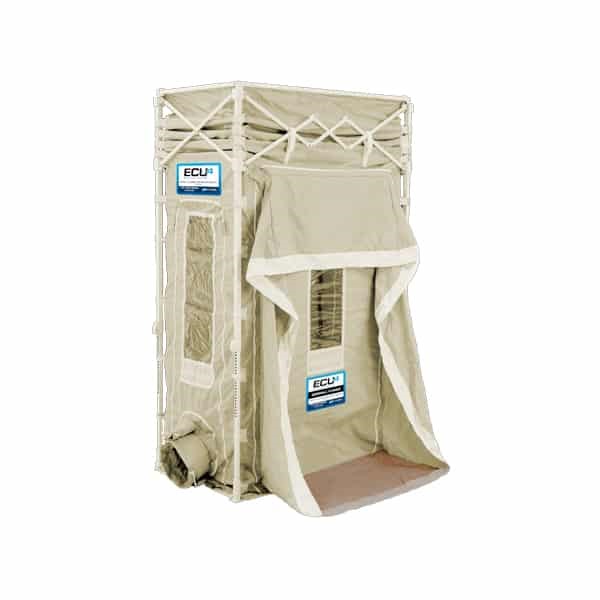Why Spaces with Anterooms are Ideal for Containment

A scenario
Suppose you wanted to create a makeshift isolation ward for influenza or COVID patients. It could be the case that one or two patients are infected with a variant that you do not want to spread to the others. The conventional approach to this problem would be to put each of them in their own environmental containment unit. An environmental containment unit is a soft tentlike structure is that uses ventilation and air pressure barriers to keep the outside air away. This method is essentially the gold standard of containment. Very little else out there can replicate or approximate the effects of this device. Most health care providers would simply provide an individual unit for each patient on the ward that had the variant. In situations like a pandemic, however, it may be more efficient to house the variant patients in a room that is equipped with an anteroom and has more robust HVAC filters.
An alternate strategy
What if there were a way to amplify the effects of the environmental containment unit and its air pressure barriers? This could be done in a room that has an anteroom. One of the big problems is that very little outside air that is not scrubbed by the filters can be allowed to enter the room for it to remain safe. One solution would be to place a containment unit with an air pressure barrier, which is normally used to house patients, in front of the room. Essentially, if someone wanted to enter the room, they would step into the containment unit, apply their PPE, and then walk into the room. There would be an airtight seal between the room and the unit, so that the unit would be functioning as an anteroom. One can think of this as an anteroom containment space.
In cases where the room is relatively small, it might be tempting to think about having more of an open transition between the containment anteroom space and the room itself. For example, the unit and the room could be separated only by a zipper, which would allow for the pressurized filtered air to fill the whole room, hence serving as an auxiliary air purifier. Although this would be very energy efficient, it would also render the anteroom space completely useless. To create an effective shield against the outside world, the anteroom space must maintain a certain threshold of air pressure to force the outside air away. If there is free flow of air between the two spaces, safe levels of air pressure will not be sustained, and then outside air will get in.
A word of warning
Keep in mind that all of this will only work if you have sufficient means for keeping the air inside the room at the same level of filtration as the anteroom. There are many options for this including a HEPA air scrubber, or a UV chamber based filtration system. HEPA air scrubbers have limitations because they can really only dilute the unfiltered air in the room with air that is filtered. The ideal thing is HVAC filter upgrades, but these can be difficult to implement using HEPA technology because of airflow resistance. Putting UV filtration chambers in the HVAC will surmount this issue.
Essentially, if you have a room with very good filtration that is at a significantly higher level than other rooms in the building and you are concerned about contamination when people enter and exit the room, you can use a containment unit with an air pressure barrier as an anteroom to combat this. It makes for a wonderful precaution to take against the spread of airborne pathogens and will surely be more economical than purchasing individual units for each patient receiving care. As pressures to keep costs down continue to mount, such a solution becomes all the more attractive.





